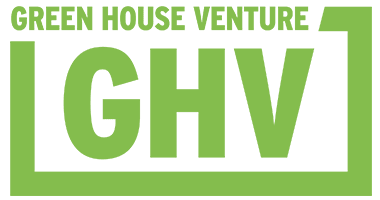PART-TIME LEAD DEVELOPER OF A COMPUTERIZED GROWING CHAMBER.
PART-TIME LEAD DEVELOPER OF A COMPUTERIZED GROWING CHAMBER.
Part time Systems Designer and Programmer needed to lead development of an advanced version of the Computerized Growing Chambers (CGC) currently used by the Green House Venture, with initial assistance from the inventor and developer of the first generation of chambers.
The Venture donates CGCs to schools to enhance science education for elementary-school students, most of them underserved, with the goal of opening paths to higher education and rewarding careers.
Competencies sought in the Lead Developer:
Required: Training and experience in Python programming, Github, and LINUX.
Desirable: Experience with Raspberry Pi and Arduino Microcontrollers; Python Frameworks (Flask and Django); PostGres, SQL, NoSQL; Data visualization, AWS, Cloud Integration, and/or IOT (Internet of Things).
Responsibilities:
- To learn from the designer of Phase 1 CGCs, Mr. Phil Speth, their hardware configurations and software functions, which have evolved as the six chambers have been fabricated over a span of several years.
- With Mr. Speth’s initial advice and assistance, to take over as designer and developer of Phase 2 CGCs.
- To oversee beta testing of a prototype and modifications to overcome problems.
- To teach paid Interns and technicians to fabricate the Phase 2 chambers.
- To fully document the Phase 2 hardware and software for future users.
Workload, start dates, and stipend:
$60/hour for an estimated 22 weeks @ 15 hours/week. Total stipend: $20,000.
Ideally, the development, testing, and documentation of the Phase 2 chambers can be completed over the course of nine months, beginning in September 2022 and ending in May 2023.
We expect Phase 3 development involving advanced Internet and Cloud applications to begin immediately after Phase 2. Ideally, the Lead Developer will continue in a similar role
with the Venture on that and other projects, notably developing plans and equipping the Educational Technology Room for our Education Center. The position working on CGCs has the potential to lead, in short, to further work with the Venture on advanced projects.
Application materials:
- ➢ A cover letter briefly explaining your interest in the project, your relevant education and experience, your availability at the times stated in Academic Year 2022-23, and your access to a reliable personal car to visit the various sites where development of the CGCs is taking place.
- ➢ A resume.
- ➢ An unofficial copy of your college transcript.
- ➢ The names of three people who can provide references, including their professional
affiliations, your relationship with them, and their contact information (email address, and phone).
Submission information: Email questions and applications to Donald Stump, Vice President and Curriculum Developer for the Green House Venture and chair of the Working Group on Computerized Growing Chambers (stump@SLU.edu).
Employer:
The Green House Venture is a non-profit organization founded in 2015 to develop a well-funded and effective way to support elementary education in science and nutrition in St. Louis. We are working in alliance with four schools in St. Louis City to innovate in the education of city children, particularly the underserved who make up the large majority of our students.
Since 2015, the Venture has developed rapidly with the support of scores of volunteers from the largest colleges and universities in St. Louis, as well as from the St. Louis Zoo, the Missouri Master Gardeners, and other organizations. We have raised nearly $2 million to develop our campus in the Shaw Neighborhood, beginning with a recently completed 3.7-acre Embankment Greenway (with a native plant and pollinator garden and nine educational growing terraces).
Currently, we are well into the process of designing and raising funds to build a $4 million Education Center, scheduled to open by Fall 2024. As an educational hub, it is designed as a broadcast studio to generate educational videos and teaching materials for distribution via the Internet to schools throughout the region and beyond.
Employer’s goals and methods:
The aim of the Venture is to create opportunities for Alliance students to go on to higher education and fulfilling careers. Because St. Louis ranks first in the nation in biosciences and agriculture, and since the region lags in the ability to supply needed scientists and technicians, one of the best local ways out of poverty lies in those areas. Whatever a child’s eventual interests, a strong grounding in science will also help in later life in endless ways.
The Venture helps to provide that background, not by teaching science in the classroom, which is the job of teachers, but by providing students with the experience of asking good questions,
exploring the science needed to answer them, becoming familiar with local research facilities and institutions of higher education, and experiencing the excitement of being scientists.
Need for advanced equipment and facilities:
Since our focus is on cutting-edge education, we are continually developing innovative facilities and apparatus. So far, the most elaborate is a first-in-the nation pollinator recovery habitat and research area along our Embankment Greenway, which is being used by prominent scientists to study the reintroduction of native bees and plants along Interstate Highways to help reverse the Midwestern pollinator collapse.
Other major projects have included preliminary funded research and planning for an aquaponics greenhouse, a vertical growing area, and a soilless rooftop garden for our education center. In these, students will be able to explore the science underlying major efforts to improve sustainability and food security in urban centers around the world.
Two such projects involve IT.
- ➢ The first is to develop the Computerized Growing Chamber announced here, one suited to sustained classroom experiments in growing and food production.
- ➢ The other is to develop an advanced Education Technology Room, where feeds from throughout the Education Center can be processed, edited, and turned into audio and video resources to be live-streamed or made available on-line to schools throughout the St. Louis Region and beyond.
This latter effort will occupy the Lead Developer called for in this ad, at least initially. The other project may, however, also be of interest to applicants with the necessary skills who may be looking ahead to possibilities for deeper involvement with the Venture.
Initiative to develop Computerized Growing Chambers (CGCs):
Key to our future educational plans is the development of powerful and inexpensive CGCs that teachers and students can use, without extensive training or assistance, to conduct hundreds of growing experiments in their own classrooms.
So far, we have developed—and piloted in our after-school program and in Alliance schools— Phase 1 chambers, each with a Raspberry Pi controller that operates the lights, fans, a remote temperature sensor, and a camera. Initial experiments in the CGCs have focused on ecology, bringing together symbiotically plants, fish, worms, and micro-organisms in a variety of soils and substrates.
Now, we are turning to the development of Phase 2 CGCs with enhanced powers to go beyond simple ecology. These will have improved I/O capabilities, allowing teachers to set experimental parameters and monitor experiments remotely and students to gather and share data on the conditions for ideal growth in various species of edible plants. To that end, units will include a range of remote sensors; pumps for watering and precisely dosing plants with individual nutrients; and improved controls for the timing, color, and duration of light.
Note: Future upgrades in Phase 3 will include the capacity to upload, store, manipulate, and format images and data on the Cloud, so that schools can share results and collaborate in crowd-sourced research projects.

